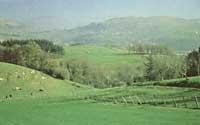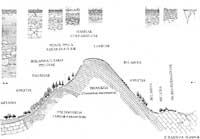How to conduct ecological studies?
1990/01/01 Lizeaga, J. | Zapirain, Josetxo Iturria: Elhuyar aldizkaria
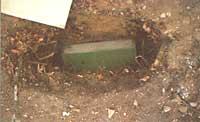
Ecology, in addition to being a socially discussed issue, is also a science, that is, scientists hypothesize and submit them to experimentation, thus assuming the hypotheses as good or bad. In short, these hypotheses aim to develop a general theory that explains the relationships between living beings. At this point ecology approaches philosophy (these theories want to explain life).
That is why in this article we will analyze the work of those who work in forests. First, the ecologist raises some questions inside, and if we go to the mountains of Euskal Herria the most important question is: Why where there is ROBLEDAL does not create HAYEDO? and vice versa, where HAYEDO is developing ROBLEDAL. There is probably a problem of competition, that is, when in the area where the oak tree is located, beech and oak begin together, oak is the one that wins the competition. It is a competition in which one destroys the other and in which both species play a life. Beech competes with oak. Everything is allowed in this competition (stealing light, stealing mineral salts, starving shrubs...). This is the picture.
In the forest there is a great war. Seeing this, ecologists begin to reflect and turn around. Hypotheses also arise: competition occurs in soil or, more specifically, in soil. Therefore, our ecological goes with a shovel to the mountain, to the forest, to take samples of land. Take them and take them to the lab. Sampling has been done in two types of forests and laboratory analysis has indicated to our ecological that all soil samples are similar. His hypothesis has drifted: soil is not the reason to win some (oaks) or others (beech).
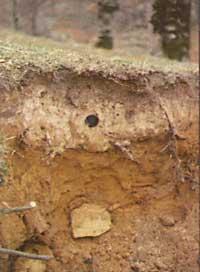
Once again it has tried to prove another hypothesis. Physical environmental conditions can condition the distribution of both forests. And yes, it seems that the height of the sea perfectly separates both types of forests. But... What influence does height have on the physiology of these two species? The height will probably condition the temperature and lighting, which will condition the physiology of the trees and their distribution. The environmentalist must confirm this, has a new working hypothesis. The best way is to bring the trees to the laboratory and in it controlling the temperature and light and introducing variations in these variables accept or annul their hypothesis. But... we cannot enter the laboratory.
Therefore, we will take the “laboratory” to the forest, or rather, the measuring tools. And when the tooling is located in the forest, we will call the whole Experimental Station. But how and where will our ecological pilot stations organize?
... To begin with, you will go to the forest and you will need to find two models or forest types. Do not think
I have
easy
until
,
Most of the forests of Euskal Herria have suffered human influence and, if possible, “natural” forests are the most useful for the ecological. The location of the stations, whenever possible, should be the same for all other variables (original stone, slope, orientation, etc.) and the variable will be unique, that is, the tree species.
This is almost impossible. Once these two type areas are located, you will install your tools and artifacts. He is interested in measuring soil temperatures, but will have a major obstacle; mercury thermometers cannot be measured in the ground. To solve this problem, our environmentalist must also know the electronics. You must use electronic thermometers. In stores they are not sold and he will have to build them. These thermometers allow more electrons to pass as it gets hotter. Our ecologist, therefore, will measure how many electrons you let pass. Temperatures in the air should also be studied, with the highest and lowest being the most important. These can be measured with a mercury thermometer.
Light is also very important for trees as it is the energy source of life. Thanks to light, the plant produces its CO2 gas, from water and mineral salts. Here too our ecologist will control the light, but what light?. The one who reaches the forest, that is, who reaches the top of the trees or who enters through it? The biologically most interesting thing is to know the amount of light that allows to introduce the forests and the degree of exploitation of them. The photometer will place them at the end of the tree, inside the forest and between them. In this way, you will be able to know the proportion that remains in the forest of light that comes in both types of forests.
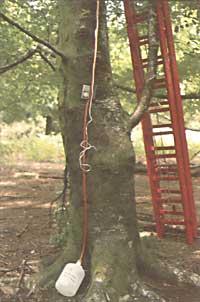
Another problem is to detect whether the forest lives well or badly. And how do you get it?. To do this, networks are placed on the ground and we can calculate the number of fruits, leaves and flowers produced by the tree. The most important thing is the leaves, since in the leaves there is chlorophyll and they are the main producers. If a forest gives off many leaves, it means that the production capacity of this forest is greater than that of another forest with fewer leaves.
The ecological also measures the existing biomass. And for what?. Biomass is a very important parameter for ecologists, as it allows to know the health of this ecosystem.
And perhaps the most important factor is water. Water is what allows life. The plants know it perfectly, and our environmentalist, knowing that, will go to the forest to control the water. He wants to know how much he reaches the forest, how much he remains on the surface of the leaves, how much he falls from the surface of the trunk, how much he pours on the hillside, how much he loses on the ground. And all this with other as many gadgets as lisimeters, pluviometers, etc. It will then take water samples and chemically analyze them in the laboratory. In this way you will be able to know the amount of food needed for the trees, as well as their movement in the soil-air system. That is, you will know the nutrient cycle and thus predict the long-term development of the forest.
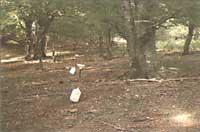
And after going to the mountain to collect data for at least a year, the ecologist may come a little closer to the answers to those initial questions.
Finally, we want to thank the Municipal Board of Hostels and Camping of San Sebastian that has allowed us to put our experimental stations in the forests.

Gai honi buruzko eduki gehiago
Elhuyarrek garatutako teknologia



